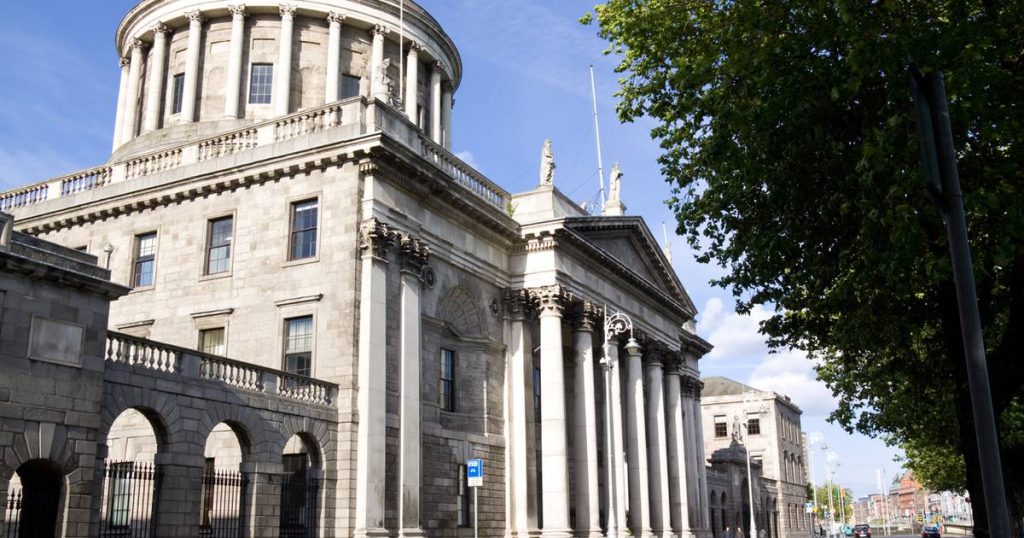A settlement has been reached in a High Court dispute in which property developer and racehorse owner Tom Doran alleged valuations obtained by a bank for land he bought for more than €3 million were forged.
AIB and Everyday Finance, who sued Mr Doran for recovery of the loans for the land, strongly denied his forgery claims.
Mr Doran (63) is a London-based Mayo-born roofer and builder who set up his own home improvement business in England which expanded into doing major residential and commercial projects.
He had opposed AIB’s application for judgment against him over the original €3.7 million loans which were later transferred to Everyday.
He also counterclaimed that, contrary to assurance he was given by AIB, no valuation reports had been obtained at the time he was approved for the main €3 million loan and that the reports the bank later came up with were forged and backdated to July 2007.
The case began in 2010 and because of disputes it was sent for full trial. However, due to a number of preliminary matters over the years, it was not until Tuesday that it began before Mr Justice Garret Simons.
Following talks on Wednesday, David Conlan Smyth for Mr Doran and Martin Hayden for AIB/Everyday, informed the judge the case had been settled and it could be put back for four months to finalise.
Mr Doran told the court on Tuesday he was one of 14 siblings and in 1979 he went to England to work as a roofer for his uncle. After setting up his own business, he made money building and selling homes in London as well as working on the Channel Tunnel.
He was close friends with businessman Tom Scanlon from Co Meath with whom he regularly went horse racing and co-owned horses. He was looking to move to Ireland with his wife and family around 2004 and agreed to buy a farm and derelict house at Annagh, Clonard, Co Meath, near the Scanlon home.
He said that at the 2004 wedding of Mr Scanlon’s daughter Sharon Scanlon, who worked for AIB, Ms Scanlon told him not to be foolish by using his own cash to buy Annagh but to instead get a loan as interest rates were very low.
He bought the Annagh property for €350,000 but later his wife said she was too nervous to move to it because it was “down a cul-de-sac”, he said.
In 2006, he bought a 22.5-acre site at Irishtown, just outside Mullingar in Co Westmeath, having been introduced to the owners, Michael and Maire Rooney, by Mr Scanlon. He had hoped to build an alternative family home on this land.
The following year, the Rooneys said they were interested in selling an adjoining 30 acres. Mr Doran was interested in this because of its development potential as it had direct access from an existing housing estate at College Hill and he said he was assured by the vendor that there was such access.
As a result of a meeting with them, the Rooneys agreed a price of €3 million for the 30 acres. Mr Doran said Ms Scanlon assured him he would be able to get a €3 million loan from AIB to finance the purchase and that there was no need for him to get his own valuation.
A week later, Mr Doran arrived at the Rooney home with an “option-to-buy” agreement which the Rooneys signed and Mr Doran gave them cheques for €100,000.
Mr Doran said he had been told before meeting the Rooneys by his then solicitor that the option-to-buy document, which Mr Doran had created himself, was not a contract and he could go ahead and sign it. He said he had put the document to the Rooneys to avoid being gazumped by someone else.
The purchase went ahead but it was claimed that it was not until later that he learned there had been no valuation reports by AIB and the ones it did have were allegedly forged.
Mr Doran said he did not get his own valuations because he knew it was part of a special condition in the sale contract that a valuation had to be carried out. He received “oral representations” from Ms Scanlon the valuation had been carried out and that “it was fine”, he said.
Following the announcement of the settlement, Mr Justice Simons congratulated the parties on being “able to reach an amicable resolution given the close relationships between the parties”.
Read the full article here














